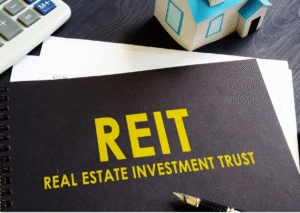What Does Real Estate Development Funding Mean for Investors?
Real estate development funding refers to the financing that allows investors to acquire land, build new structures, or renovate existing properties for long-term value. Unlike traditional mortgages used for personal homes, these loans are designed for non-owner-occupied properties where the purpose is to generate returns. Development funding is crucial because projects often require significant upfront capital before producing revenue, whether in the form of rents or sales.
For investors, real estate development funding is not just about accessing money; it’s about choosing financial tools that align with project size, risk tolerance, and long-term strategy. The U.S. Small Business Administration highlights that access to flexible financing directly impacts the ability of small businesses and investors to create jobs, stimulate economic activity, and scale sustainably (U.S. Small Business Administration).
Why Is Flexibility and Speed Important in Real Estate Development Funding?
The real estate market moves quickly, and opportunities often come with short decision windows. Properties in prime locations or distressed assets suitable for redevelopment can be snapped up within days. Traditional bank loans, however, are often slow, requiring extensive documentation, high credit standards, and weeks or months of processing.
Agile funding solves this challenge by emphasizing speed and adaptability. Investors can secure financing that moves with the market rather than against it. This flexibility matters because:
- Timing is critical: A delay can result in losing a property to another buyer.
- Market conditions change: Interest rates, material costs, and buyer demand shift rapidly.
- Project needs evolve: Renovation costs may increase, or new opportunities may appear mid-project.
Funding that adapts to these realities ensures investors can pivot without jeopardizing their capital or timeline.
How Do Different Loan Types Support Development Strategies?
Real estate development funding is not one-size-fits-all. Each project demands financing that matches its lifecycle. Some commonly used loan types include:
- Fix & Flip Loans – Short-term loans designed for acquiring, renovating, and reselling properties quickly. These are especially useful in markets where demand for upgraded housing is high.
- Buy & Hold Mortgages – Ideal for investors seeking steady rental income over time, these loans support long-term portfolio growth.
- BRRRR Financing – Standing for Buy, Rehab, Rent, Refinance, Repeat, this approach allows investors to recycle capital and expand portfolios efficiently.
- Cash Out Refinance – Enables investors to tap into existing equity for new projects without selling their properties.
- DSCR Loans – Debt-Service-Coverage-Ratio loans are based on a property’s cash flow rather than personal income, making them highly investor-friendly.
- New Construction Loans – These fund ground-up projects, ensuring developers can bring entirely new properties to market.
When aligned with an investor’s goals, these funding options serve as the building blocks of wealth creation in real estate.
What Role Does Risk Management Play in Development Funding?
Funding a real estate project involves inherent risks—ranging from cost overruns to regulatory delays. However, strategic funding reduces exposure by structuring loans that match anticipated timelines and contingencies. For example, hard money loans may come with higher interest rates, but their fast approval can prevent costly missed opportunities.
Government resources, such as the U.S. Department of Housing and Urban Development (HUD), emphasize that careful financial planning is essential to minimize risks in housing development (HUD). Investors must assess:
- Loan-to-Value (LTV) Ratios – The percentage of the project financed compared to its value.
- After-Repair Value (ARV) Calculations – Estimating the worth of a property after improvements.
- Cash Flow Projections – Ensuring rents or sales will cover loan repayment and operational costs.
By combining risk management with agile financing tools, investors can protect their capital while pursuing ambitious projects.
How Does Real Estate Development Funding Contribute to Portfolio Growth?
Real estate development funding is more than transactional; it is transformational for investors aiming to scale. Access to financing allows a single property deal to become the foundation of a broader portfolio. Consider how different strategies contribute:
- A fix & flip project generates profits that can be reinvested.
- A BRRRR strategy recycles capital, turning one property into many.
- DSCR loans allow investors to grow portfolios based on rental income, not personal financials.
- Cash out refinance unlocks built-up equity, fueling expansion without asset liquidation.
The ability to compound investments through funding accelerates growth, making financing a growth engine rather than a hurdle.
How Can Investors Align Funding with Long-Term Goals?
Every investor has different objectives. Some prioritize steady rental income, others seek rapid capital gains, and many pursue a hybrid approach. Aligning funding with these goals ensures the right balance of risk and reward.
- Short-term wealth building → Fix & Flip Loans, New Construction Loans
- Long-term cash flow → Buy & Hold Mortgages, DSCR Loans
- Portfolio scaling → BRRRR Financing, Cash Out Refinance
- Full-spectrum growth → Real Estate Financing Solutions that combine multiple approaches
By matching financing structures to strategy, investors create sustainable momentum rather than chasing isolated wins.
What Are Key Considerations Before Applying for Development Funding?
Securing real estate development funding requires preparation. Investors should approach lenders with a clear plan and supporting documents. Key considerations include:
- Credit profile and experience: While some loans (like DSCR) prioritize property cash flow, creditworthiness still influences terms.
- Project scope and budget: Lenders want clear evidence of feasibility, including timelines, contractor bids, and contingency planning.
- Exit strategies: Whether refinancing, renting, or selling, investors must outline how loans will be repaid.
- Partnership with lenders: Working with a lender who understands real estate investment ensures smoother communication and more tailored solutions.
The U.S. Federal Reserve underscores that clear communication between borrowers and lenders reduces risks and improves project outcomes (Federal Reserve Board).
Why Is Choosing the Right Partner Critical in Development Funding?
The financing partner chosen can make or break a project. Beyond loan terms, investors need lenders who provide guidance, transparency, and adaptability. Agile partners not only approve loans but also help investors navigate obstacles.
This is where services like those from No Limit Investments stand out. With offerings such as Fix & Flip Loans, Buy & Hold Mortgages, BRRRR Financing, Cash Out Refinance, DSCR Loans, New Construction Loans, and Real Estate Financing Solutions, investors gain access to tools designed specifically for growth.
Choosing the right partner ensures financing becomes a strategic advantage, enabling investors to scale portfolios confidently and sustainably.
How Can Investors Take Action Today?

Real estate opportunities rarely wait. Investors ready to accelerate growth should act decisively by securing funding that matches their goals and strategies. The first step is connecting with a financing partner who understands both the urgency and complexity of real estate development.
Take action today with No Limit Investments. Their tailored loan programs, including Fix & Flip, BRRRR, Buy & Hold, DSCR, Cash Out Refinance, New Construction, and full Real Estate Financing Solutions, are built to give investors the agility, speed, and flexibility they need to succeed.
Final Thoughts
Agile real estate development funding is the bridge between vision and achievement. It transforms ideas into properties, properties into portfolios, and portfolios into long-term wealth. By choosing the right loan strategies and the right partner, investors can accelerate growth while minimizing risks. Real estate development is not just about buildings—it’s about building futures. With the right funding, those futures are limitless.
Works Cited
Federal Reserve Board. The Importance of Financial Planning and Loan Structuring. Federal Reserve, 2024, www.federalreserve.gov/publications.htm.
U.S. Department of Housing and Urban Development. Guide to Housing Development Finance. HUD, 2024, www.hud.gov/program_offices/housing.
U.S. Small Business Administration. The Role of Financing in Small Business Growth. SBA, 2023, www.sba.gov/article/2023/may/role-financing-small-business-growth.
Frequently Asked Questions:
- What makes real estate development funding “agile”?
Agile real estate development funding is financing that is flexible, fast, and adaptable to the changing needs of projects. Unlike rigid bank loans, agile options—such as Fix & Flip Loans or New Construction Loans—can be approved more quickly and tailored to unique investment strategies. This allows investors to seize opportunities without delays.
- How do different types of loans support various investment strategies?
Different loans align with specific investor goals:
- Fix & Flip Loans support short-term resale projects.
- Buy & Hold Mortgages are ideal for long-term rental income.
- BRRRR Financing helps recycle capital for portfolio growth.
- Cash Out Refinance allows investors to unlock equity for new deals.
- DSCR Loans are based on property cash flow rather than personal income.
Each option supports a unique path to building wealth in real estate.
- What risks should investors consider before applying for development funding?
Investors should account for cost overruns, regulatory delays, and changes in market demand. Managing Loan-to-Value (LTV) ratios, calculating After-Repair Value (ARV), and ensuring cash flow projections are realistic all help minimize risks. Choosing the right funding partner, such as No Limit Investments, further reduces risk by providing guidance and tailored loan programs.
- How can development funding accelerate portfolio growth?
Real estate development funding enables investors to scale faster. For instance, BRRRR financing lets investors recycle capital into multiple properties, while DSCR Loans expand portfolios based on rental income instead of personal finances. Combined with strategies like cash out refinance, funding transforms single deals into long-term growth opportunities.
- Where can investors find the right partner for real estate development funding?
The best partner provides not just loans but strategic financing solutions tailored to investors’ goals. No Limit Investments offers services including Fix & Flip Loans, Buy & Hold Mortgages, BRRRR Financing, Cash Out Refinance, DSCR Loans, New Construction Loans, and full Real Estate Financing Solutions—making them a comprehensive choice for growth-focused investors.







